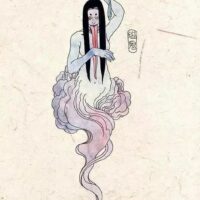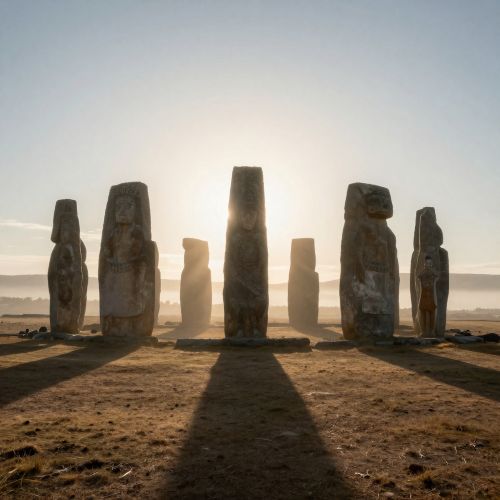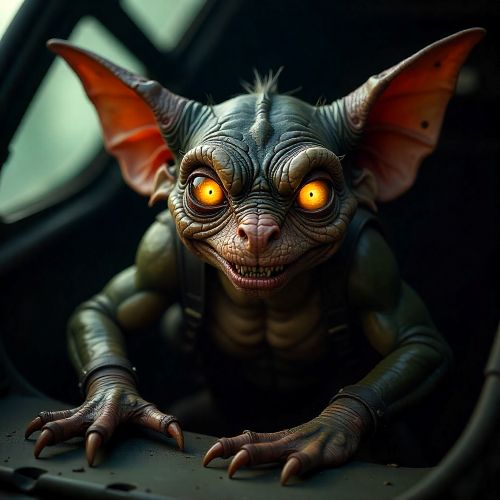Diao Si Gui : The Hanging Ghost of Chinese Folklore
Listen
At a glance
| Description | ||
|---|---|---|
| Origin | Chinese Mythology | |
| Classification | Ghosts | |
| Family Members | N/A | |
| Region | China | |
| Associated With |
|
Diao Si Gui
Introduction
In the bustling lanes of Chinese folklore, amidst tales of dragons and divine warriors, lurks a spirit that sends a chill down the spine—the Diao Si Gui, or the “Hanged Ghost.” Not your run-of-the-mill bhoot, this ghostly figure is believed to be the wandering soul of someone who died by hanging—either by their own hand or as punishment from society. Their presence isn’t just a spine-tingler; it’s a stark reminder of lives cut short, often entangled in deep sorrow and injustice. Like an old tale whispered under breath during chai time, the Diao Si Gui brings with it a shiver of truth and terror.
Physical Traits
The appearance of a Diao Si Gui is unmistakable and chilling. These spirits are depicted with ghastly features that immediately convey their tragic end. Their most iconic trait is a long, red tongue that dangles grotesquely from their mouth—a symbol of asphyxiation and a terrifying remnant of the rope that once held them. This feature isn’t merely for fright; it’s a visual shorthand for the unnatural and painful way they died.
Their skin is often described as pallid or grayish-blue, lacking any sign of life or warmth. Many tales say they appear suspended in the air, their feet never touching the ground, emphasizing their state of limbo. Some are said to bear bruises or rope marks around their necks, while others glow faintly in the dark, further amplifying their ghostly aura. Their very form acts as a warning—a spectral embodiment of suffering that has never been laid to re
Family
Unlike other supernatural entities in Chinese mythology that belong to clans or families of spirits, Diao Si Gui are typically lone wanderers. Their isolation reflects the circumstances of their death: many died without support, love, or dignity. However, some folklore suggests that multiple Diao Si Gui may gather in places where hangings occurred frequently, such as ancient execution grounds, abandoned buildings, or cursed trees. These gatherings are not social events but rather echoes of shared pain, manifesting as concentrated zones of spiritual unrest.
Such spectral convergence can create powerful supernatural hot spots, where the veil between the physical and spirit world is thin. People who visit these sites report extreme unease, hearing whispers or seeing fleeting apparitions that mirror the traits of Diao Si Gui. These hauntings, fueled by collective grief, can linger for centuries.
Other names
While “Diao Si Gui” is the most common term used, various regions in China refer to these entities differently. Some simply call them “Red Tongue Ghosts” due to their disturbing mouth features. Others classify them within the broader spectrum of Gui (ghosts), sometimes overlapping with Yuan Gui—vengeful spirits of those who died unjustly.
In dialectal storytelling, they might also be labeled as “Diao Gui” or even just described by the nature of their death, such as “rope ghosts” or “strangling spirits.” Each variation carries a cultural nuance, but the underlying theme remains consistent: these are tortured souls with unfinished business and an eerie presence that affects the living.
Powers and Abilities
What sets Diao Si Gui apart from other ghosts in Chinese folklore is their potent ability to interact with, and harm, the living. Legends tell of their hypnotic pull, a dark allure that draws victims into despair. This power is not always overtly malicious—it often comes cloaked in sorrow. Witnesses report hearing voices promising peace, reunion with loved ones, or release from suffering—tempting those already burdened by grief or depression.
These ghosts are also said to possess illusory powers, able to manipulate dreams or twist perceptions. Victims may experience visions or hear phantom voices urging them to end their lives. It’s as if the Diao Si Gui wish to recreate their own death in others, thereby spreading their pain or seeking company in their misery.
In some tales, they don’t attack directly but haunt persistently, draining emotional energy and fostering a sense of hopelessness. This psychological manipulation is often more terrifying than a physical threat, as it aligns with real-world mental health struggles. Their power thrives on human vulnerability, making them especially dangerous to those already on the edge.
Modern Day Influence
Despite their ancient origins, Diao Si Gui continue to thrive in contemporary culture. Their spectral image has crossed into horror literature, films, and digital folklore. In East Asian horror cinema, figures resembling the Diao Si Gui often appear as floating women with limp bodies and long tongues, signaling their ghostly status without overt exposition.
More subtly, their mythology has found metaphorical ground in psychological thrillers and dramas that explore themes of depression, suicide, and trauma. Writers and directors use Diao Si Gui not just as monsters, but as symbols—representing the inescapable grip of mental anguish or the haunting consequences of societal neglect.
In online forums and modern ghost-hunting communities, Diao Si Gui are frequently referenced in stories about haunted places—particularly locations known for past suicides. Reports of red-tongued apparitions, or whispers heard near trees or abandoned rooms, are sometimes interpreted through this folklore lens, especially in Chinese-speaking regions.
Interestingly, modern psychology has begun examining such folklore under the framework of “suggestive hauntings.” These are cases where cultural expectations—like fear of the Diao Si Gui—can lead people to interpret natural phenomena as supernatural, especially during emotional crises. This illustrates how enduring and impactful the myth remains, shaping perceptions and experiences even in an age dominated by science.
Related Images
Source
Matteo Damiani. (2016). Demons, Monsters and Ghosts of the Chinese Folklore. https://china-underground.com/2016/04/09/demons-monsters-ghosts-of-the-chinese-folklore/
The Angry Noodle. (2021). 7 Underrated Scary Mythical Creatures With Horror Potential. https://theangrynoodle.com/scary-mythical-creatures/
Contributors to Wikimedia projects. (n.d.). List of supernatural beings in Chinese folklore – Wikipedia. https://en.wikipedia.org/wiki/List_of_supernatural_beings_in_Chinese_folklore
Stella Cheang. (2024). The World of Chinese Ghosts – Tsem Rinpoche. https://www.tsemrinpoche.com/tsem-tulku-rinpoche/science-mysteries/the-world-of-chinese-ghosts.html
Poo, M.-C. (2022). Ghosts and religious life in early China. Cambridge University Press.
Willoughby-Meade, G. (1928). Chinese ghouls and goblins. Constable & Company Ltd.
Hearn, L. (2011). Some Chinese ghosts (Reprint ed.). Tuttle Publishing. (Original work published 1898)
Chang, C.-C. (2025). Coping with hanged ghosts: Rationalizing the prevention of suicide by hanging in early modern China. Omega: Journal of Death and Dying. Advance online publication. https://doi.org/10.1177/00302228241312839
Frequently Asked Questions
What is a Diao Si Gui in Chinese folklore?
A Diao Si Gui is a ghost created when a person dies by hanging, often returning with intense anger, regret, or unresolved injustice.
Why do Diao Si Gui become vengeful?
Their spirits are believed to be trapped in pain or despair from the violent and lonely nature of their death, driving them to haunt the living.
What does a Diao Si Gui look like?
They are commonly described as pale, long-tongued ghosts with rope marks around the neck, sometimes with their heads tilted unnaturally.
Where do Diao Si Gui usually haunt?
They are believed to linger near trees, rafters, abandoned buildings, or locations tied to their death, seeking people to interact with — often dangerously.
How do people protect themselves from Diao Si Gui?
Traditional beliefs suggest loud noises, protective charms, strong lights, or religious rituals help ward them off and release trapped spirits.






